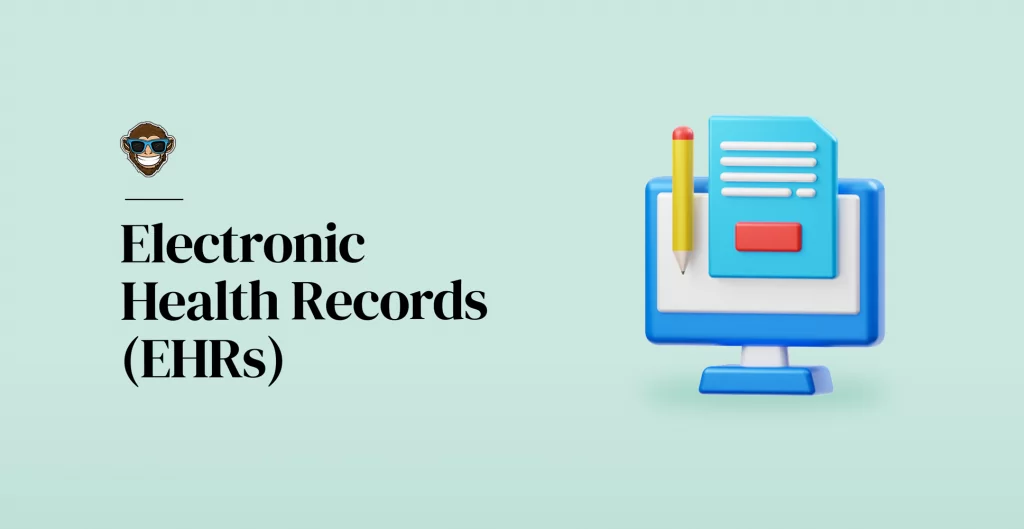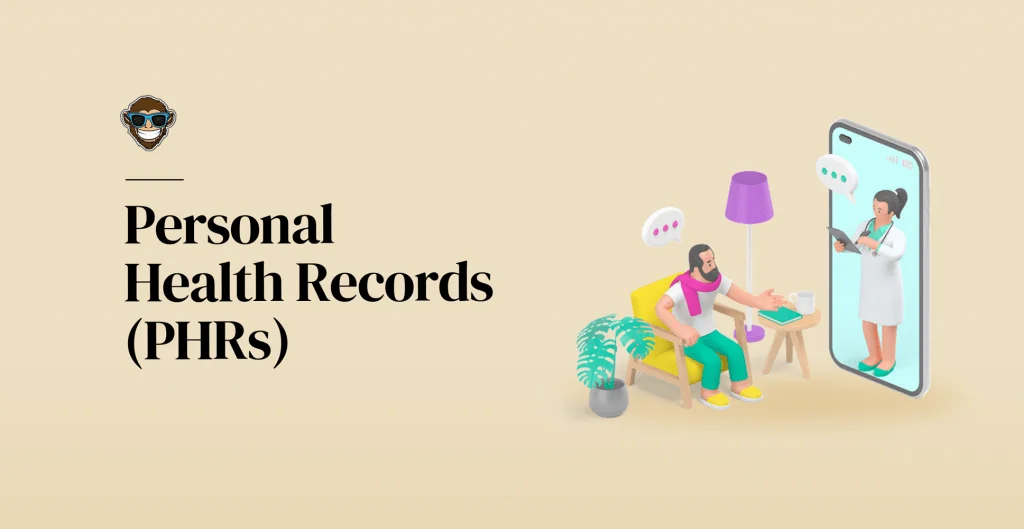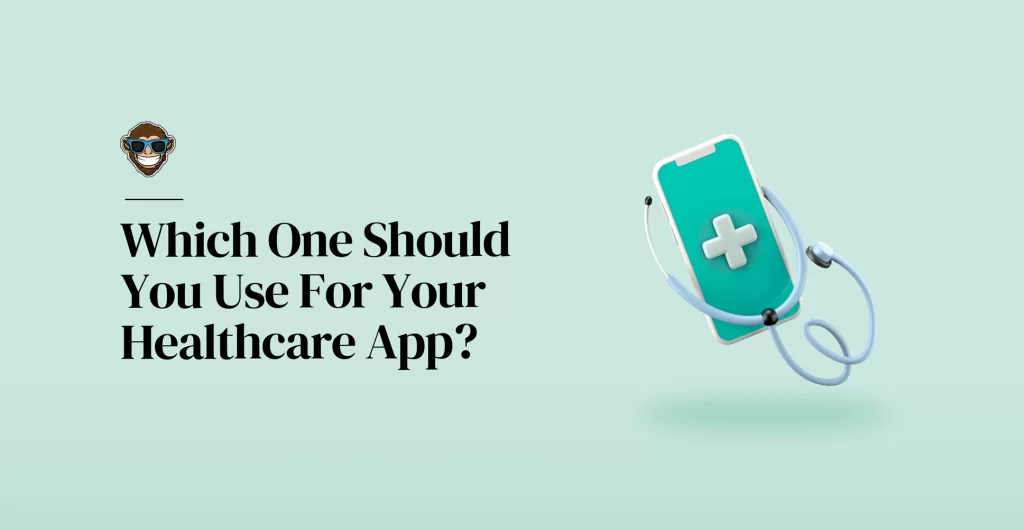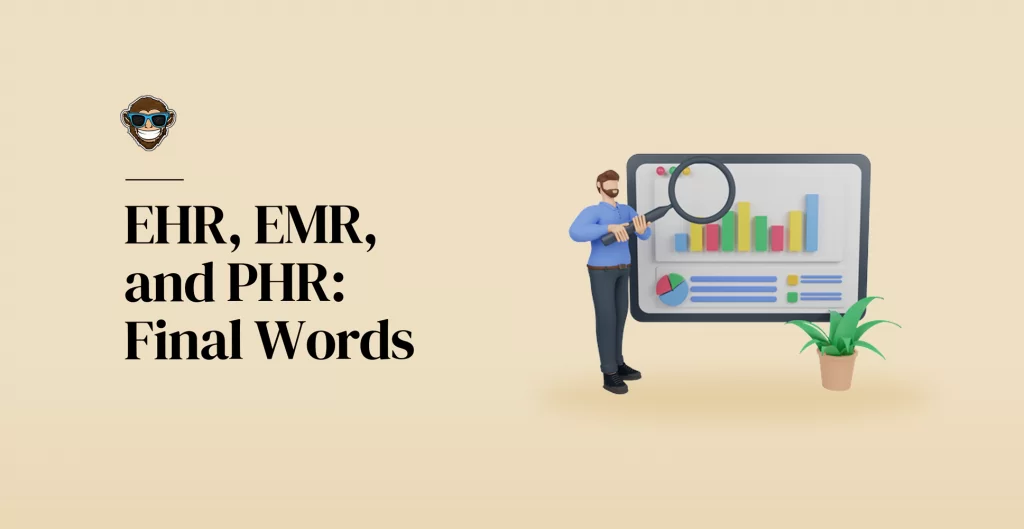Digital medical records are becoming an increasingly popular way of keeping patient data without paperwork, interoperability, or security issues. However, there are critical differences between how this data is stored, and stakeholders must understand them to properly harness the benefits of digitization in healthcare.
Have you ever been to a doctor’s appointment and had to explain your entire medical history because they have no idea what your current or past ailments are? Or maybe they don’t have the tools to access your medical history? And what about at the end of the appointment when you end up with a ton of paperwork and handwritten prescriptions where you couldn’t read a single word? Well, if you have, you’re not alone. Sadly, even with the advent of modern technologies and the digitization of healthcare, there are still many practices that, for whatever reason, haven’t adopted the electronic solutions that can enable interoperability and data sharing. This issue is problematic, especially in today’s digitized healthcare environment, where successful health outcomes and patient-centricity are prioritized. Still, the tools exist, and placing the patient at the center of all medical activity mostly depends on how medical data is stored, used, and shared in healthcare apps, software, and medical systems. Here’s where Electronic Medical Records (EMR), Electronic Health Records (EHR), and Personal Health Records (PHR) come into play.
Yes, that all sounds great and lovely, but do you know which one to use for your healthcare app? Maybe you should use all of them? Or how about only two? Asking yourself these questions is crucial for the successful development of your healthcare app. The interchangeability by which stakeholders use these three terms can be confusing for patients. The similarities and differences between them are a common point of confusion, yes, even for healthcare professionals. However, understanding how these terms differ and complement each other is as simple as swiping your finger.
Let’s go ahead and dive into each term to try and help you understand them better, and, hopefully, together, we can determine which one is better for your brand new healthcare app. But first, some history to contextualize.

Where do EHR, EMR, and PHR Come From?
Before digital medical records came into the picture, healthcare interactions were utterly different than they are today. For example, before the mid-2000s, when you went to the doctor, they would have to search through mountains of paper records to find your medical history, and that’s even if they even had one. Or, if you were admitted to a hospital, a nurse assistant or intern would have to go to the records room and manually hunt for your records in a sea of thousands of files. It truly was a logistical nightmare, but it was the only way to keep medical records. Digitization, data sharing, and healthcare apps were unheard-of terms, and interoperability between hospitals and practices was even close to entering the picture.
From the early 1960s, we could already appreciate stakeholders implementing the earliest data processing systems that focused only on clinical data management. These systems garnered immediate attention due to their undeniable benefits, even though they were nowhere near as functional as the ones we have today. Also, around the same time, American physician Larry Weed developed the Problem-Oriented Medical Record, the first approach to introduce the concept of using electronic methods to record and access patient data. Some years later, in 1972, the Regenstrief Institute implemented the first electronic medical record system, which government hospitals and academic institutions only used due to its costs and complexity of use.
Afterward, in the 1990s, as personal computers were becoming more affordable and widely adopted, the Internet materialized. As a result, the innovations mentioned above started to evolve faster, enabling more accessible access to information and setting the ground for what, some years later, would become digital medical records. In that sense, some advancements were made during the 90s, one of which was the HIPAA. In 1996, the Health Insurance Portability and Accountability Act was introduced to counteract some healthcare coverage issues and address data privacy and security concerns in the United States healthcare system. Also, with the emergence of internet-based data management software in the early 2000s, the ability to access medical information remotely made this method of keeping records very popular and more affordable for physicians and hospitals. Here’s when the first web-based medical records became widely implemented.
Next, and more importantly, in 2004, President George W. Bush signed an executive order that doubled the budget for healthcare IT projects and oversaw the development of health IT infrastructure, which inevitably included all EMR, EHR, and PHR systems. From here on in, the three forms of medical data management started to grow exponentially, and practices across the globe adopted them to improve their services and reduce costs and inefficiencies. More recently, in 2016, the US government established an EHR implementation incentive program, offering benefits to medical providers and healthcare institutions that employed any of these systems. The program resulted in 89% of US physicians adopting either an EHR, EMR, or hybrid medical data storage system.
Now, let’s get to the point.

Electronic Medical Records (EMRs)
As we discussed above, healthcare workers used to rely on paper medical records to provide any kind of medical care to a patient. They were not only handling insane amounts of–most times unorganized–paperwork every day, but if any files were lost, misplaced, or damaged, then the information contained in them was lost forever. Can you imagine? All your life’s medical history is gone in the snap of a finger. At that point, physicians would have to rely on the patient’s spoken account of their history and, paired with their current condition, try to move forward. Doing so, however, meant making a diagnosis without sufficient knowledge of any necessary prior conditions, allergies, hospitalizations, or surgeries that can make the difference between proper treatment avenues and diagnoses. But thankfully, now, with the evolution of technology in the healthcare space and the rise of electronic medical records, healthcare professionals can access patient information anytime, anywhere. They can also see their entire history, ensuring the treatments they design are well suited for the patient’s conditions and don’t pose any potential hazards to their health.
But let’s get to the nitty-gritty; what exactly are EMRs? Electronic medical records are the digital version of all the information that would otherwise be on paper and paper charts in a doctor’s office or hospital. The fact that they are electronically kept means that they are historically accurate, always up-to-date, and easily accessible and manageable by all interested parties. This electronic information includes all medical history, past and current diagnoses, past and present medications, immunization history, lab results, hospitalization records, surgeries, allergies, and all previous and current attending doctors’ notes and observations. But EMRs are much more than simply a digital replacement for outdated paper medical records. EMRs enable effective and efficient communication, coordination, and interoperability among physicians, patients, and all interested members of a healthcare team, for the sole purpose of providing optimal medical care.
On that same note, EMRs allow clinicians to:
- Track patient data over a defined period of time.
- Efficiently identify which patients need preventive screenings, sooner checkups, and treatment modifications without making them attend in-person visits.
- Check on their patients and the progression of their illnesses based on parameters such as blood pressure, blood sugar, or heart rate remote monitoring.
- Improve the quality of medical care the practice gives and improve medical outcomes without incurring extra costs or time constraints.
Limitations of EMRs
It’s important to note that one crucial difference between EMR and EHR is that information contained in EMRs isn’t easily shared outside of the practice. It works wonders inside the walls of a specific institution. Still, when it’s time to share them with other practices or hospitals, the patient’s medical history and records have to be sent by email or even printed, making them not much better than paper records. In other words, EMRs can’t be easily shared with another organization.
Additionally, the volume of medical data grows at a staggering rate. As of right now, the healthcare industry generates around 30% of the world’s entire data volume, that’s approximately 80 megabytes generated by each patient every year. These growing volumes make it difficult for practices–especially smaller ones–to handle that information correctly and integrate it adequately for optimal decision-making. Therefore, practices would have to purchase digital platforms capable of assembling, storing, and structuring the vastness of patient data in a user-friendly format that physicians and other stakeholders can easily access and manipulate. And, if said platform or system provides interoperability, it becomes even more helpful to enforce the delivery of high-quality medical care.

Electronic Health Records (EHR)
In essence, electronic health records work similarly to EMRs. Just like EMRs, they are digital versions of a patient’s medical chart, and just like EMRs, they also enable seamless medical data storing and sharing. However, unlike EMRs, which only include data from a single institution, EHRs are built to go beyond a single practice’s standard clinical data collection. Instead, they support the exchange of the information within them, allowing physicians to have a broader, more holistic view of a patient’s healthcare journey. EHR represents this journey as a longitudinal data record of each patient’s medical information that originates with every healthcare encounter. This includes information of all the clinicians that have been–or currently are–involved in said patient’s treatment, regardless of whether they are outside or within a specific institution. In other words, electronic health records are an inter-organizational system for storing, managing, and sharing patient data across all parties interested, promoting interoperability and data integration to provide better, more efficient medical care.
Again, the great thing about an EHR system is its ability to enable interoperability. If you’ve followed any of our other blogs about the healthcare ecosystem, you probably already know how interoperability is crucial for medical outcomes. For one, this interoperability means that all authorized clinicians involved in a patient’s care, even if they are on the other side of the world, can instantly (and safely) access said patient’s medical information. This benefit helps automate physicians’ workflows and is crucial for improving outcomes because the patient can access quality medical care from several specialties, which, depending on their illnesses, can mark the difference between life and death. For instance, a patient with brain cancer can benefit from attending an Oncologist and a Neurologist, a general doctor, a radiologist, lab technicians, and even a chemotherapy specialist. EHRs promote interoperability between these clinicians no matter how far apart they are or the conditions they work under. In other words, if they can access the EHR file, they can provide effective treatment avenues based on interoperability and data sharing. We can even say that an EHR system is inherent to patients, not practices. EHR follows the patient wherever they may go, even if it’s across the world.
Additionally, EHRs are usually cloud-based, meaning that every patient’s medical information is easily accessible on any electronic device. The versatility that cloud-based apps and storage systems have is undeniable. In the case of EHRs, it means that all authorized parties can access said information without boundaries or limitations. Also, when a patient transfers to a new practice or institution, they don’t need to carry a massive stack of papers, which, let’s face it, is a hassle, not to mention terribly unsafe. With EHRs, their entire medical history is safely stored electronically and readily available, and accessible to all interested and authorized parties. This way, all the new healthcare interactions are recorded in the cloud, and the EHR is automatically updated. Afterward, all following clinicians can see the latest changes and access the latest information without any need for paperwork or heavy files.
Limitations of EHR
EHRs are all that; there’s no denying it. However, data entries still need to be done manually, and physicians often spend a lot of time doing so. As a result, some of the time saved by EHRs in common healthcare scenarios is spent updating them, making this a cumbersome process instead of a time saver. As a matter of fact, research shows that around 50% to 70% of physicians claim to experience burnout thanks to having to perform EHR-related work. These numbers reflect a pressing need to simplify data entering and EHR management quickly.
Moreover, since most EHR systems are more “open” and accessible, they can also be more exposed to hackers. As a result, institutions that adopt EHR systems must invest additional resources in ensuring the security and integrity of the system. Doing so means that implementing a robust EHR system is not a simple endeavor. To perform at total capacity, EHRs need constant updates and security considerations that must be completed by well-trained personnel, resulting in a significant rise in time and monetary costs.

Personal Health Records (PHRs)
As you’ve probably guessed by now, personal health records (PHRs) also work similarly to EHRs and EMRs. They all contain basically the same types of information—diseases, treatments, diagnoses, medications, hospital stays, and everything related to a patient’s medical history. However, while Physicians and other authorized medical personnel manage EHRs and EMRs, PHRs are designed to be created, accessed, and managed by the patients themselves. Clinicians can access PHR data only if the patient authorizes them, making PHR access and data management the patient’s responsibility. This way, PHRs allow patients to be in charge of creating and upkeeping their electronically-stored health information in a secure and private platform.
Also, the fact that they can be considered a more “personal” type of EHR doesn’t mean that the source of the information changes. PHRs still include medical data from several of the same sources such as attending doctors, hospitals, remote monitoring medical devices, and even by the patients themselves. This last point not only makes PHRs universally accessible, but it makes the information within them understandable to the patient and any layperson (usually a family member) who doesn’t have any medical or technical knowledge.
So PHRs are, well, just that: personal health records. They are a lifelong tool for patients who want to manage their health information and control their medical treatments and outcomes. In that sense, PHRs are an invaluable tool for promoting correct health maintenance and disease management, significantly improving health outcomes. Actually, Global IT claims that managing personal and medical data practices will triple by 2023, and digitally engaged patients will gain more insight into their conditions, actively helping improve them. Furthermore, the patient, who is the only authorized party to access the information, can grant access to their healthcare provider, friends, and family. As a result, these added privacy measures ensure that one person only manages the information as opposed to several, which is the case of EHRs and EMRs. With PHRs, the patient is responsible for recording the medical data and is also responsible for granting access, meaning accessibility is limited, and security is increased.
PHR Limitations
The fact that PHRs are personal and follow the patient sounds excellent and all. Still, since it’s a layperson the one who is recording and managing medical information, chances are they will not understand most of the data within the PHR. This phenomenon can result in larger margins of errors, mishandling of medical data, or misunderstanding of medical terms, which adds unnecessary stress and anxiety. Moreover, since PHRs are electronically recorded, there is an increased chance of IT-challenged patients recording incorrect information or mishandling medical files or any element inherent to recording information electronically.

Which One Should You Use For Your Healthcare App?
Now that we’ve (hopefully) helped you understand the difference, pros, and cons of each of the three ways to store medical records electronically, it’s time to get to the good stuff; which one is right for your app. But, first, let’s do a quick recap on the main aspects of each one:
- EMRs are ideal for medical data collected and managed by healthcare professionals and stakeholders within one institution. The information doesn’t leave the said institution.
- EHRs are more suitable for medical data collected and managed by different healthcare professionals from various departments, institutions, or even cities and countries. The information is meant to be shared and promotes interoperability.
- PHRs are ideal for medical data collected and managed by patients themselves. The patient decides whether or not they share the information with anyone else.
The main thing you must understand is that, no matter how these three terms differ, the main defining factors in choosing between EHRs, EMRs, and PHRs lie in who your end-users are. Also, you must consider the type of information your app will collect and store and whether or not your app will share patient data with other apps, healthcare systems, or people. For instance, if you designed your healthcare app for a dentist’s office to manage their patient’s histories, record images, and handle appointment scheduling, then you will be better off using an EMR system. Why? Because chances are the dentist office probably won’t need to share patient information with other healthcare professionals and may not need interoperability at any point in a patient’s journey.
On the other hand, if you’re designing an app for a hospital to store and manage images, lab test results, and patient records collected by several departments and shared by physicians and patients, you need to use an EHR system. An EHR system will allow your app’s medical data to be safely shared between departments and institutions seamlessly and promote the interoperability inherent to EHRs. But, if you designed your app for patients, not doctors or healthcare institutions, then you must implement a PHR system that only the patient can access and manage, but that also enables data sharing with other parties when and if the patient decides to do so.
Our recommendation of which of the three you should use for your app is based on who your end-users are, what type of information they will collect, and with whom (if applicable) they will share it with. If you’ve done your user research right, which we’re sure you have, and you know your audience and users very well, then choosing between either of the three should be a piece of cake.
So, in a nutshell:
- If your app’s end-user is a particular healthcare facility or practice that doesn’t share patient data with anyone outside said practice, use an electronic medical record system.
- Suppose your app’s end-user is a healthcare facility or institution with numerous departments or different branches, such as a hospital or a pharma company. In that case, you must choose an electronic health record system. This way, you can enable seamless data sharing across the different areas and departments.
- If your app’s end-user is the patient, then you should implement a patient health record system.

EHR, EMR, and PHR: Final Words
In the era of modern technologies, where data is gold, having seamless and fast access to medical data, either by the patient or the physician or both, is crucial for successful outcomes. Gladly, the healthcare industry is no stranger to these modern technologies, and tools such as EHRs, PHRs, EMRs have become common in many practices across the globe. More so, app developers have also started to implement these solutions and inject them into their mobile products to help stakeholders enjoy the benefits of what will indeed become the future of healthcare. So, suppose you started reading this article with no idea of the differences or similarities between EHRs, EMRs, and PHRs. In that case, we hope that by now, we’ve managed to enlighten you and guide you in the path of choosing which of the three is more suitable for your app. And with a lot of hard work and a little bit of luck, you can send us a shout-out when your app becomes the next big hit of the mobile healthcare universe.
However, if you still have any questions, doubts, or would like for us to clear things up for you, we’re happy to help. Just drop us a line!
